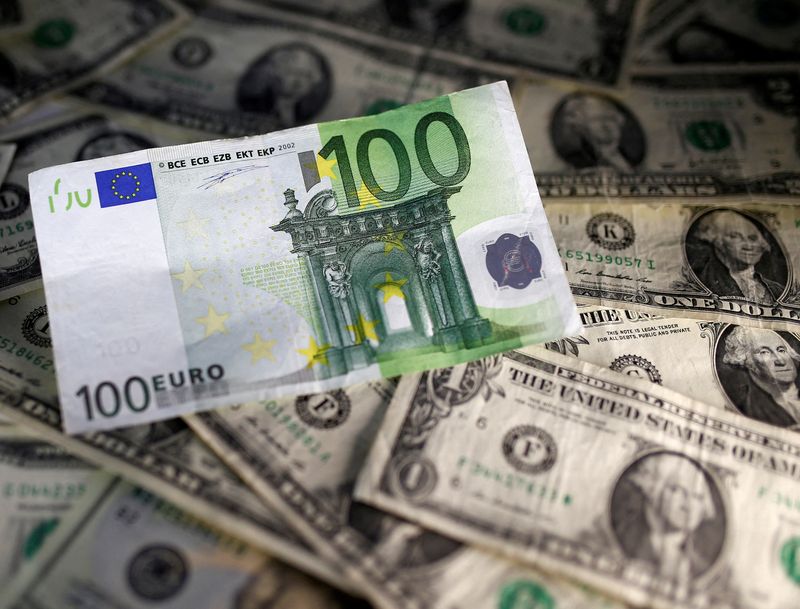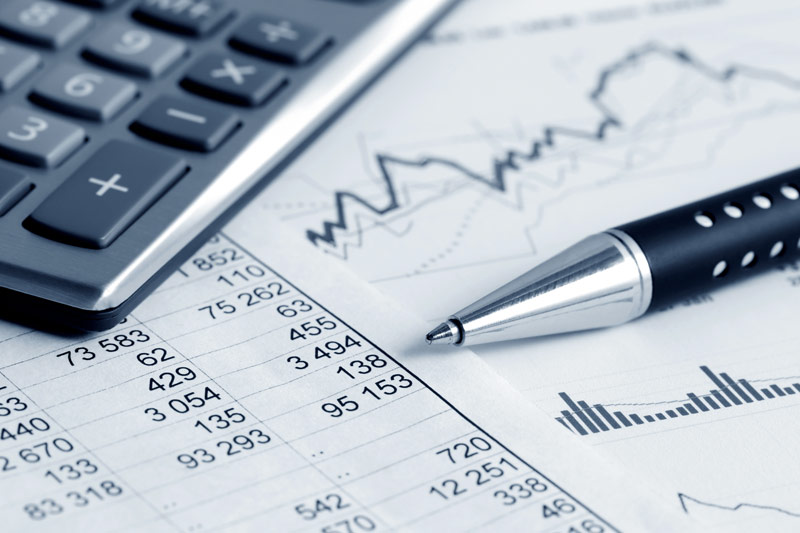By Naomi Rovnick and Dhara Ranasinghe
LONDON (Reuters) – With the euro set for its worst month since early 2022, analysts warn a wild ride in the currency could be the next source of global market volatility after the Japanese yen’s swings in August led to a period of unrest between the assets.
The European single currency fell in value by just over 3% against the dollar in November. It is now teetering towards the $1 mark, under pressure from US President Donald Trump’s proposed trade tariffs, economic weakness in the eurozone and an escalating conflict between Russia and Ukraine, just as US growth expectations lift US stocks and the dollar .
Political problems in France are another potential headwind, with French consumer confidence at its lowest level in five months and the fate of the new government and its budget in jeopardy.
However, investors and currency traders are divided on what comes next as the dollar is also vulnerable to inflation rates and the rise in government debt, which is shaking confidence in US markets and the economy.
This uncertainty could increase if the euro continues to fall, raising the threat level of unexpected currency shifts that could topple the highly popular so-called Trump trades, which assume a euro decline as U.S. stocks rise, analysts said.
“We will have volatility because people will start thinking: are we going to break parity (euro-dollar) or will it fall back?” Societe Generale (OTC :), head of FX strategy, Kit Juckes.
“The minimum we will see is more debate in both directions on the euro and I do not trust that these extraordinarily high levels of cross-asset correlations will continue.”
The August market crisis started with swings between the yen and the dollar, overwhelming hedge funds betting on the Japanese currency and spiraling into stock market selling to finance margin calls.
Regulators have warned of the market’s vulnerability to similar events when popular market narratives change quickly due to the high level of leverage in the system.
“If we break the parity between the euro and the dollar, we will have these kinds of conversations again,” Juckes said.
SPILLS
The euro-dollar is the world’s most actively traded currency pair and rapid exchange rate shifts could disrupt the profits of multinationals and the growth and inflation prospects for countries that import raw materials and export goods priced in dollars.
‘The euro is a benchmark’ Barclays (LON:) Themos Fiotakis, global head of currency strategy, said this means trade-sensitive countries such as China, South Korea and Switzerland could see their currencies weaken against the dollar if the euro falls further, so they can compete with the exports from the eurozone.
The British pound, which fell just over 2% against the dollar this month to around $1.26, is very sensitive to movements in the euro, he added.
The market’s sensitivity to the euro-dollar rate has also increased following what currency strategists say was a rush by traders to enter into options contracts that combine bets on the investment outcomes of Trump’s policies, such as the weakening of the euro and the rise of the S&P .
“We’ve seen a lot of people trying to invest in (these) conditional outcomes,” Fiotakis said, which could increase correlations between currency movements and broader markets.
Investors underestimate that risk, says UBS strategist Alvise Marino.
A measure of investor demand for protection against short-term fluctuations between the euro and the dollar is around 8%, well below the level of almost 14% when the euro last fell below $1 in October 2022.
“Realized volatility in the currency market is likely to be high, and certainly higher than markets are pricing in,” Marino said.
He advises clients to hedge against currency fluctuations through derivative contracts that pay out if the euro’s volatility is higher in a year.
SPLIT VIEWS
Long-term asset managers, meanwhile, are deeply divided over where the euro and dollar are headed, underscoring how this crucial exchange rate could be in for a bumpy ride in the coming months.
“We aim for the euro to go to 99 cents by the middle of next year,” said Willem Sels, Global Chief Investment Officer at HSBC’s Private Banking and Wealth Unit.
But Vincent Mortier, chief investment officer of Amundi, Europe’s largest asset manager, said interest rate cuts in the eurozone could boost eurozone business and consumer spending and lift the euro to $1.16 by the end of 2025.
Traders in the fast-moving currency options market were late Tuesday to estimate a 56% probability that the euro will be higher than its current level of about $1,047 by year-end, despite major banks like JP Morgan and Deutsche Bank (ETR:) says a move to $1 could happen depending on rates.
Increasing bets on a rate cut by the European Central Bank by half a percentage point to 2.75% next month have weakened the euro.
But the popular market narrative that Trump’s aggressive growth policies and import taxes will fuel US inflation and keep interest rates high and that the dollar will be powerful is also starting to falter.

Eurizon SJL Capital CEO Stephen Jen said the US risks a so-called bond watch moment as White House lenders in the $27 trillion Treasury market push up debt levels in an effort to rein in tax cuts funded by excessive borrowing.
A resulting tightening of financial conditions “should allow for a soft landing of the US economy and lower long-term interest rates,” he said, leaving the dollar overvalued.


